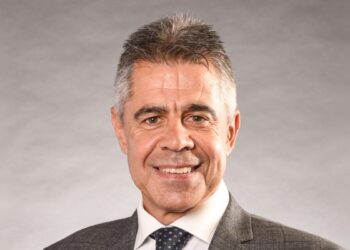Speaking in a webinar, Smarter SMSF chief executive Aaron Dunn said the prohibition on members be able to use the segregated to calculate ECPI where they have a total super balance over $1.6 million immediately before the start of the relevant income year, is throwing up some problems for practitioners.
Mr Dunn gave an example of a two-member SMSF that is 100 per cent in pension phase where the SMSF applies the tax exemption under the segregated method because by default, the fund’s assets are solely being used to enable the fund to discharge its pension liabilities. In this example one member has $1.45 million in the SMSF and 185,000 in a public offer fund. The other member has $400,000 in their SMSF.
“Forever and a day, what we have done, is we’ve claimed the tax exemption under the segregated method and haven’t been required to obtain an actuarial tax certificate to determine whether we are eligible or not, to have that 100 per cent tax exemption,” he explained.
“The problem that now exists is that when we look at the SMSF in isolation we would simply again claim under the segregated method again and disregard all income gains and losses, in respect to the fund for that financial year.
“However when we add the member’s $1.45 million with the $185,000 that they have in a public offer fund, [under the new rules], our SMSF is now going to be required to obtain an actuarial tax certificate, to determine the tax exemption.”
Practitioners are therefore now required to factor in what other balances the individual may have outside of the fund which make up the total superannuation balance, he said.
“What we don’t know from the ATO is if we rightly thought that we’d gone off and correctly claimed tax exemption under the segregated method but have later found that the client wasn’t entitled to it in that way, would the client then be denied the right to have a tax exemption for that year?” Mr Dunn questioned.
“Now we would hope that the ATO would allow us to go back and obtain the certificates so that we weren’t aggrieved by that process, but it is now a risk that we need to manage. This impacts the administrator but could impact the auditor in terms of their understanding of the financial position of the fund.”



I reiterate again that when I posed this question to the ATO in May last year in the lead up to the changes, I was advised that so long as all the members of the SMSF were in pension mode for the full year, then the fund was regarded as segregated and no actuarial certificate was required. If a member in pension mode at 30/6/2017 had an excess over 1.6m then that excess had to be commuted to accumulation or withdrawn to avoid exceeding the transfer balance cap.
By rolling over the excess to an external APRA fund accumulation account it avoids the SMSF having part pension and part accumulation and therefore enables it to continue as a segregated fund and no actuary certificate requirement.
Subsequent rises in the members pension account balance due to significant earnings do not impact on the transfer balance cap for these issues.
The fact that the [u]total super balance [/u]for a member is above 1.6m due to accumulation accounts in another fund such as an APRA fund has no bearing on the SMSF ‘s obligations regarding actuarial certificates according to the ATO advice to me.
As has rightly been pointed out, this would just be a gravy train for actuaries for the sake of telling you 100% = 100%.
The fact that there are online certificates being issued on the basis of scant information submitted makes a mockery of the whole process anyway. In summary this is the advice I have been given from the ATO and I am relying on it. Cheers
Regarding the matter of todays article [color=green]”Total super balance miscalculations putting ECPI at risk” and the text
” However when we add the member’s $1.45 million with the $185,000 that they have in a public offer fund, [under the new rules], our SMSF is now going to be required to obtain an actuarial tax certificate, to determine the tax exemption.”
[/color]The advice I have received from the ATO Super section is that an actuarial certificate is not required so long as the SMSF is exclusively in pension mode throughout the year. That is, the funds in a separate public fund are not relevant to this issue of actuarial certificates.
I think you will find that they won’t get an exemption in this case without an Actuarial Certificate. Furthermore – if they have over $1.6m in an SMSF Account Based Pension (due to investment earnings having increased the balance above the transfer balance cap), then they will require an Actuarial Certificate in order to claim the exemption.
For funds that are 100% in pension phase. you cannot expect SMSF trustees to pay for an Actuarial Certificate that effectively states the ECPI is 100%. A self assessment is more appropriate. What Trustees have to ensure is that they tick the ‘unsegregated assets method’ at 10C of the Annual Return and leave 10D blank. An Actuarial Certificate is just money for beer and better retained in the superfund.
Firstly the acctuarial certificat in this case is not an acutarial calculation. It is an arithmetic calculation. In theory the numbers are the same. Secondly we still have the need to get an actuary’s certificate because the legisaltion was not changed with John Howard’s super changes. The legislation writer forgot to read all the rules. Thirdly recently it was planned to get rid of this useless requirement but some in the industry were too frightened to take on the job of doing the calculation themselves and need this dummy. The only job the acutary actually does is look at his bank statement and view the deposits.